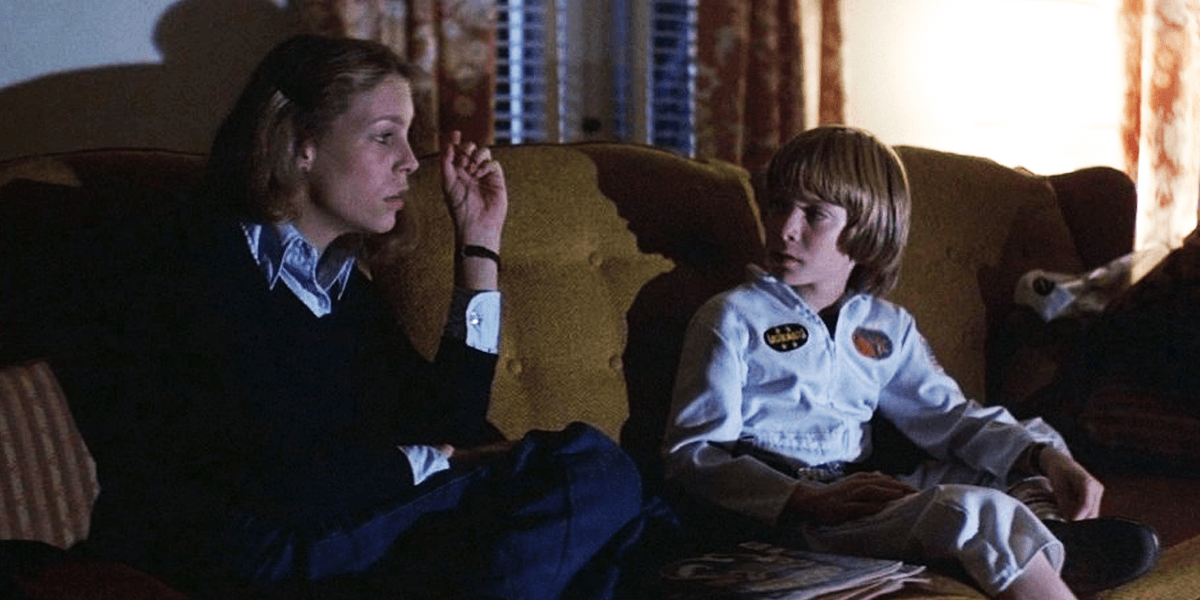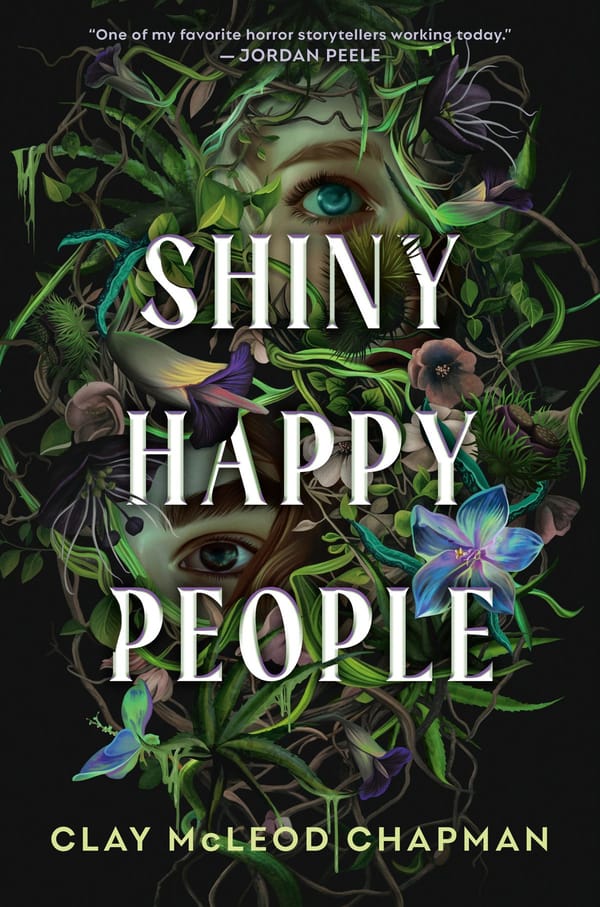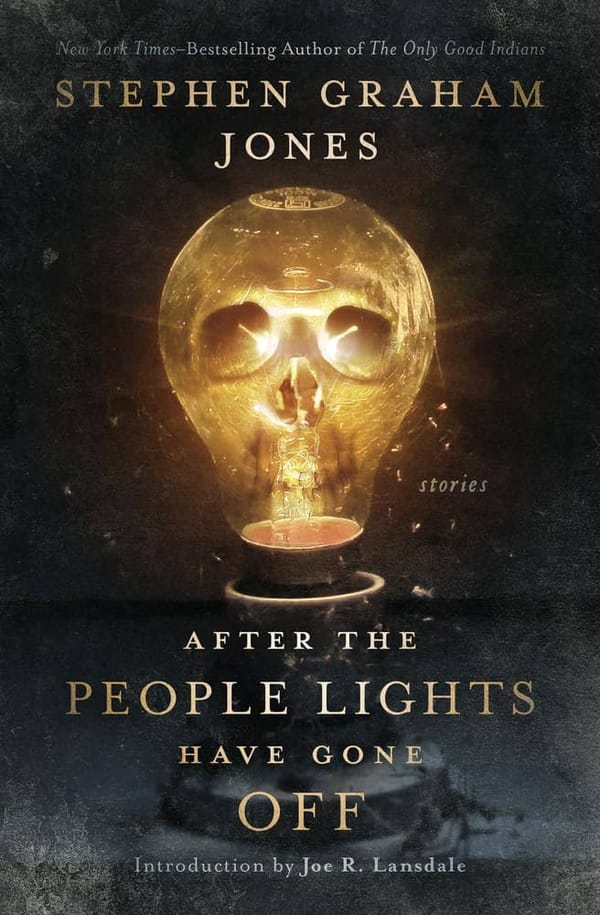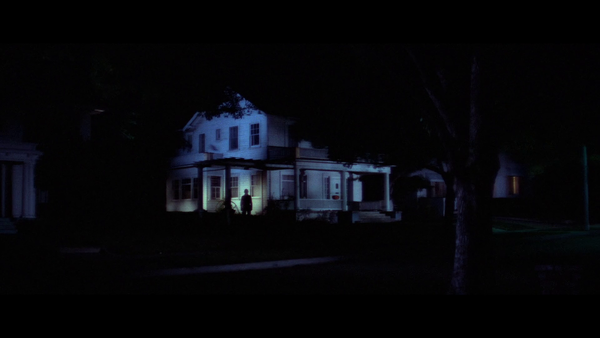Tracing The Shape 10: The Final Calm

The incorporation of children in the Halloween narrative, not just as props but as characters with their own fears and joys, is a crucial element of the movie's success. The film's original title was, famously, The Babysitter Murders, but it was never just about the babysitters.
Babysitting is a position of vulnerability. You're in a house that's not yours, surrounded by things you're not meant to touch, watching someone else's child, a precious, precious being that you're meant to guard with your life. Not many babysitters go into the job expecting mortal danger, but there's a reason so many urban legends surrounding babysitters and dark deeds exist. When you place yourself completely in someone else's world, and volunteer for guardianship over another human life, you're vulnerable, not just because of the strange environment, but because you have to be willing to give freely of yourself to that child.
This is why I love the babysitting scenes in the film so much, particularly the ones before Annie really gets into danger. In these first few minutes at the Wallace and Doyle homes, while Michael does kill a dog outside (we're not gonna talk about dead dogs too much, don't worry), there is a sense of warmth and comfort indoors. Lindsey Wallace is glued to the TV, Annie and Laurie are talking about boys, Annie's making popcorn. It's just cozy.
For everyone, that is, except Tommy Doyle, whose thoughts of the Boogeyman are tormenting him to such an extent that even Howard Hawks' The Thing From Another World on TV can't distract him. He needs guidance and care, and Laurie's the only one there to give it, so she leans into her role as his caretaker. She uses kid logic, explains The Boogeyman can only come out on Halloween, and she'll be standing in his way when he does. It's not only prophetic, but it's a scene that stands in stark contrast to Annie's babysitting style, which mostly involves parking Lindsey in front of the TV.
Does that make Annie wrong? Definitely not, as I would have loved the "just go watch monster movies" babysitter who made popcorn with real butter when I was a kid. But for the purposes of narrative, it draws certain sharp lines. Why does Michael go for Annie first instead of Laurie? Well, she's the one who yelled at him on the street and even tried to confront him in the bushes, so that feels like a good enough reason. The more Michael watches, though, the more he sees a version of Judith, his own neglectful babysitter, in Annie. She's ignoring the kid, she's shouting, she's taking off her clothes. That's more than enough, as we'll discuss in greater detail later, to get Michael on her tail.
But even with all of this in mind, Michael waits. We know, just as he knows, that Annie is in the house with a single child, no other adults, and a dog she hates. That dog (poor Lester) is quickly sent outside, where Michael removes that particular obstacle (they filmed the dog jumping into the actor's arms, then played the footage in reverse and in slow motion to get the "death" shot) with cool efficiency. Now he knows that not even a dog can stop him, and Annie's clearly too distracted to really care that she hears noises out the Wallace's kitchen windows, so why not just step in? He could take care of the whole Wallace house in a matter of minutes, and he could probably do it without tipping anyone off to the violence.
There are a couple of reasons why Michael waits, but for now I want to focus on just one, the more esoteric and abstract idea that floats around in my head when I watch these scenes. We've already talked about the sense of magic surrounding Michael, the way he enchants the landscape as he transforms from escaped mental patient into certified Boogeyman, but the magic does not just apply to him. Annie couldn't possibly care less about some creep in the bushes, and Laurie's across the street using basic kid horror rules to explain to Tommy why The Boogeyman can't get him. Her explanation is an interesting bit of prophecy, because The Boogeyman never does get Tommy, but it's also, to my mind, a magical invocation in and of itself.
Remember how good it felt to feel truly safe as a kid on a quiet night at home? Imagine being Lindsey Wallace or Tommy Doyle in these situations. You've got your candy haul, your cool babysitter is over, there's popcorn, there's movies, including some that maybe your parents wouldn't let you watch. The couch is comfy, the lamp light is warm, and even when you get scared, someone like Laurie Strode is there to reassure you. That is, in its own way, a kind of magic.
When you feel that enveloped in comfort and care as a kid, it feels like whatever's outside the walls of your house can't really get you, and for this one moment in Halloween, that's actually true. No one, save poor Lester the dog, has breached the protective barrier of these homes, the warm cocoon of Halloween fun. This is the final calm before the storm of Michael Myers, and it's there not just by happenstance, but because Laurie and, to a lesser extent, Annie have put the work in to make it that way. They've made themselves vulnerable, open, to the care of someone weaker than they are. And they will pay the price.
Because you can only keep The Boogeyman at bay for so long.
Next Time: Annie Brackett's Last Ride!


